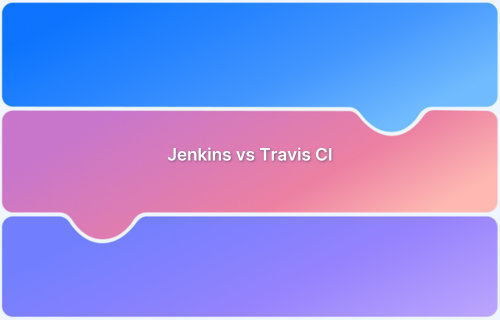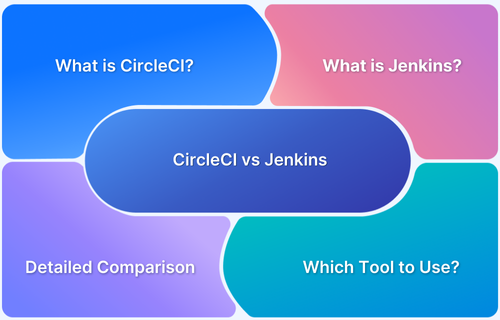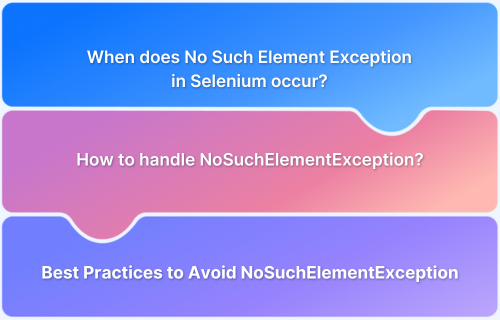Continuous Integration and Continuous Deployment (CI/CD) are key pillars of modern DevOps. Among the many tools available, Travis CI and CircleCI stand out as widely used options, each with its strengths and limitations. This article compares the two platforms to help teams decide which fits their project needs better.
Overview
1. What is CircleCI and Its Key Features
- Cloud-based CI/CD tool with both SaaS (CircleCI Cloud) and on-premise (CircleCI Server).
- Runs unit, integration, and functional tests with strong support for Docker and containerized projects.
- Core features:
- Parallelism: Spread tests across machines for faster execution.
- Cache: Reuses data from previous jobs.
- Workflows: Shorter reruns, faster feedback loops.
- VCS support: GitHub, Bitbucket, GitHub Enterprise.
2. What is Travis CI and Its Core Features
- First CI-as-a-Service tool, designed for open-source projects.
- Automates builds and tests directly from linked repositories.
- Core features:
- Repository access for pull request builds.
- Supports 21+ languages (Java, Python, Node.js, Ruby, Android, etc.).
- Pre-installed build/test tools.
- Deployment on AWS, Google Cloud, Heroku, and more.
- Unique Build Matrix lets tests run across multiple language and package versions.
3. Detailed Comparison: Travis CI vs CircleCI
- Setup: Both use YAML configs, but CircleCI provides a YAML generator, easing pipeline setup.
- Integrations: CircleCI uses Orbs (reusable snippets) for faster third-party integrations, while Travis integrates well with GitHub and Bitbucket by default.
- Customization: Both support REST APIs and CLI interaction; CircleCI allows custom Orbs for reusability.
- Hosting: Both offer cloud and on-premise solutions; CircleCI Server integrates well with Kubernetes.
- Parallel Testing: Supported by both; CircleCI spreads tests across executors, while Travis uses the Build Matrix.
4. Choosing Between Travis CI and CircleCI
- Travis CI: Best for open-source projects and smaller teams looking for streamlined CI with broad language support.
- CircleCI: Better suited for teams needing private cloud options, advanced workflows, and strong GitHub integration.
This article explains Travis CI and CircleCI, their individual features, a detailed comparison across setup, integrations, and parallel testing, and guidance on when to choose each tool.
What is Continuous Delivery?
Continuous delivery is a software development process that uses automated tests to validate if the changes to the codebase are correct and stable for immediate autonomous deployment to a production environment.
Some of the popular CD tools are:
- AWS CodePipeline
- Jenkins
- TeamCity
- GitLab
- Bamboo
What is Continuous Integration?
Continuous Integration is the practice of automating the integration of code changes from multiple contributors into a single software project. By using CI, developers don’t have to manually merge their codebase and deploy it to production. Rather, it is handled by CI independently and rapidly.
Some of the popular CI tools are:
- Travis CI
- CircleCI
- TeamCity
- Jenkins
- Bamboo
- GitLab CI/CD
Read More: Difference between CI/CD, Agile and DevOps
To compare the two CI tools, let’s first understand each of them individually to be able to better compare them.
What is CircleCI?
CircleCI is a cloud-based tool that helps automate integration and deployment processes. CircleCI server is a self-hosted and on-premise solution with CircleCI Cloud as the hosted SaaS (Software as a Service solution.
Using unit tests, integration tests, and functional tests, it focuses on testing all submitted code changes. It is a pretty reliable tool if you are just getting started with CI, especially for projects using containerization (Docker).
Features of CircleCI
Some of the core features of CircleCI are:
- Parallelism: It makes running parallel tests possible by spreading the tests across different machines.
- Cache: It uses cache to reuse the data from expensive fetch operations from previous jobs.
- Workflows: This is a great feature that helps to increase the speed of software development with faster feedback, shorter reruns, and more effective use of resources.
- Version Control System (VCS): Supports GitHub, Bitbucket, and GitHub Enterprise.
Read More: How to run parallel tests with CircleCI
What is Travis CI?
Travis CI was the first CI as a Service tool. It was introduced to build code in the cloud. It is a tool created for open-source projects and focused on CI. It uses automated testing and an elaborate alert system to optimize the build process.
The user can link their repository, build and also test their apps. It also offers many automated CI options, which cut out the need for a dedicated server that allows you to test in different environments, machines, and operating systems. Like CircleCI, Travis CI is great for making your first steps in the continuous integration of out-of-the-box solutions.
Unlike CircleCI, Travis CI supports the build matrix, which is a tool allowing tests to run with different versions of languages and packages.
Features of Travis CI
Some of the core features of Travis CI are:
- Repository access to build pull requests.
- Support for 21 languages, including Android, C#, C++, Java, JavaScript (Node), Python, Ruby, etc.
- Pre-installed build and test tools.
- Deployment on multiple cloud services.
Travis CI vs CircleCI : A Detailed Comparison
- Installation
If you want to use CircleCI, you just have to log in to GitHub or Bitbucket and authorize CircleCI to access the code. By signing on travis-ci.com, one can use Travis CI with GitHub. Upon signing up, it allows the repository to test from the Travis settings page and add travis.yml to the root folder.
Both CircleCI and Travis CI can be integrated with popular version control systems like GitHub, Bitbucket, and others.
- Integrations
CircleCI can be integrated with several tools from categories such as code analysis, deployment, reporting, monitoring, testing, and more. Integrations in CircleCI are available as CircleCI Orbs, which allow integration with third-party tools. These are reusable snippets of code that play a vital role in the automation of repeated processes, thereby accelerating the project setup.
By default, Travis CI works with popular version controls like BitBucket and GitHub. Moreover, it also supports a number of tools for websites, mobile applications, desktops, and plugins & libraries that can interact with Travis CI.
- Pipeline Process
CircleCI and Travis CI create and maintain a CI/CD pipeline differently from each other. For Travis CI, you have to manually create a YAML file (.travis.yml) by following their documentation.
In this regard, CircleCI is much better with the provision of a YAML configuration generator that lets you create CI/CD pipelines with much ease.
Read More: How to implement a CI/CD pipeline?
- Customization
Both CircleCI and Travis CI are extensive as they offer RESTful APIs. This lets you access the pipeline programmatically. You can interact with both CircleCI and Travis CI remotely using Command-line interfaces (CLIs).
CircleCI allows creating custom Orbs to contain some set of steps or a complete job to leverage its reusability. CircleCI Orbs can be shared and later used across builds due to its reusable format.
- Hosting
Both CircleCI and Travis CI allow cloud-based and on-premise options. CircleCI Server, which is the on-premise variant of CircleCI, is deployed via cloud platforms like Azure, AWS, Windows Cloud, and Google Cloud, to name a few. CircleCI Server automates Kubernetes deployments, and Kubernetes CircleCI orbs can help to get started with Kubernetes and CircleCI.
- Parallel Testing
Both TravisCI and CircleCI support parallel testing. CircleCI allows you to run tests parallelly by spreading the tests across different executors.
Build Matrix feature in Travis CI enables you to split up the unit tests and integration tests into two different build jobs. These tests can then be run in parallel for optimal utilization of available build capacity supported by the account.
Travis CI vs CircleCI: Differences
| Criteria | Travis CI | CircleCI |
|---|---|---|
| Source Code Repositories | GitHub, Bitbucket | GitHub, Bitbucket |
| Configuration | YAML (travis.yml) | YAML (config.yml) |
| Cloud Offering | Yes | Yes |
| Parallelism | Yes | Yes |
| Analytics | Yes | Yes |
| Integrations | Travis CI supports integrations, as it integrates well with GitHub by default. However, it is also compatible with Bitbucket and supports integration with third-party tools too. | CircleCI offers integration in the form of CircleCI Orbs. These reusable code snippets accelerate the setup. CircleCI enables automation and integration with third-party tools. |
| Cloud Integrations | AWS, Heroku, Kubernetes, Azure, Google Cloud, and more. | AWS, Heroku, Kubernetes, Azure, Google Cloud, and more. |
| REST APIs | Yes, the current version is API v3 | Yes, the current version is API v2 |
CircleCI vs TravisCI: Which one would you choose?
Now that it is discussed what each tool does along with the features, it gives a better idea of when to use which tool. It is suggested to use CircleCI and TravisCI when you have smaller teams and projects based on your preferences.
- If you have a codebase that is open-source and you want a tool to streamline the build process, then TravisCI is the recommended choice.
- However, when looking for a tool that is GitHub-friendly with extensive community support and the ability to run on a private cloud, then CircleCI is worth checking out.
No matter which CI/CD tool you choose, it is essential to test the app on real devices and browsers to recognize all the bottlenecks that could hinder the overall user experience. Whether using CircleCI or Travis CI for your CI/CD pipeline, you can test your application on 3000+ real device-browser combinations by integrating with BrowserStack Automate. This lets you test the application under real user conditions, improving the overall performance and accuracy of the application.
BrowserStack Automate also allows you to run parallel tests, thus, optimizing your resources, and accelerating the release time of each build of the application.








